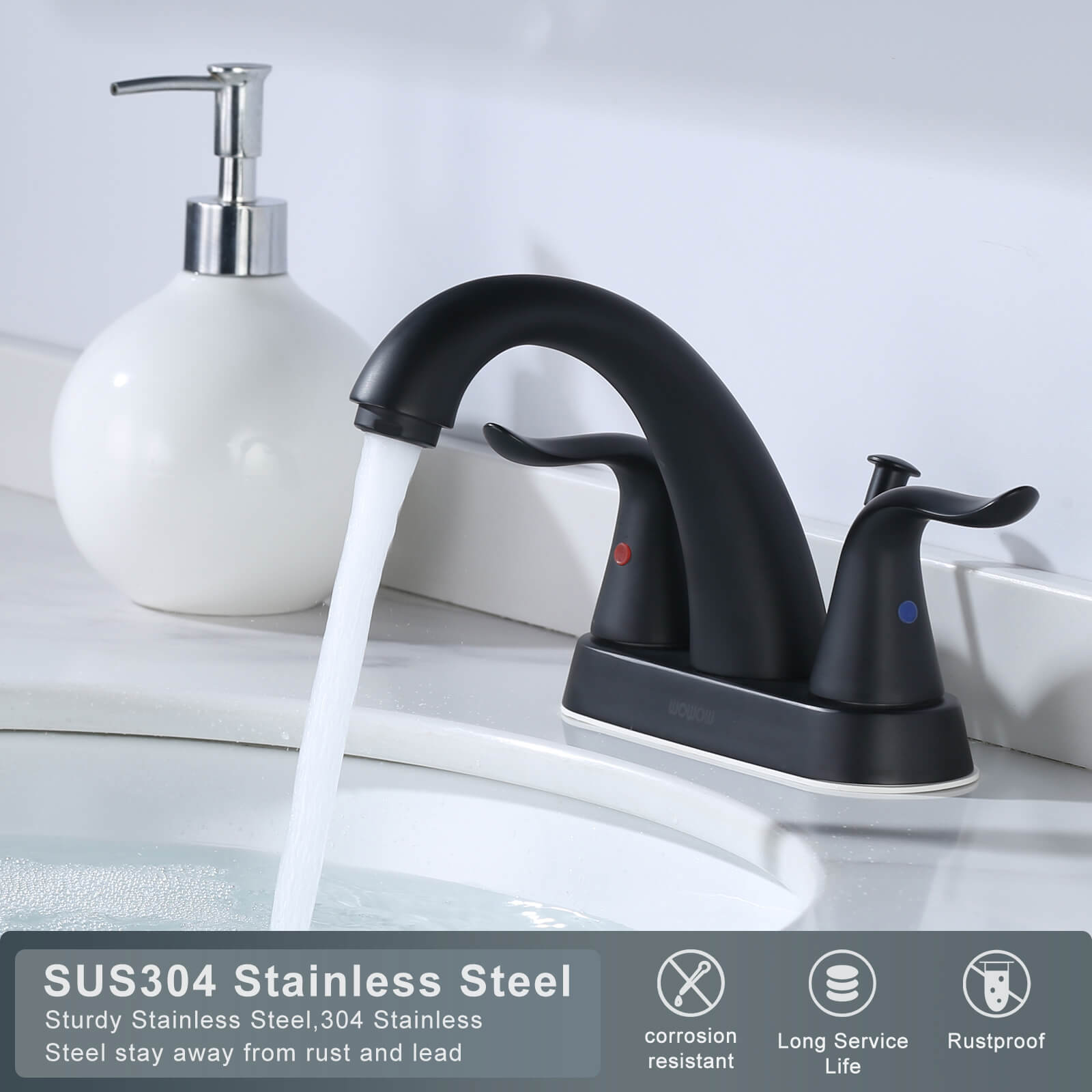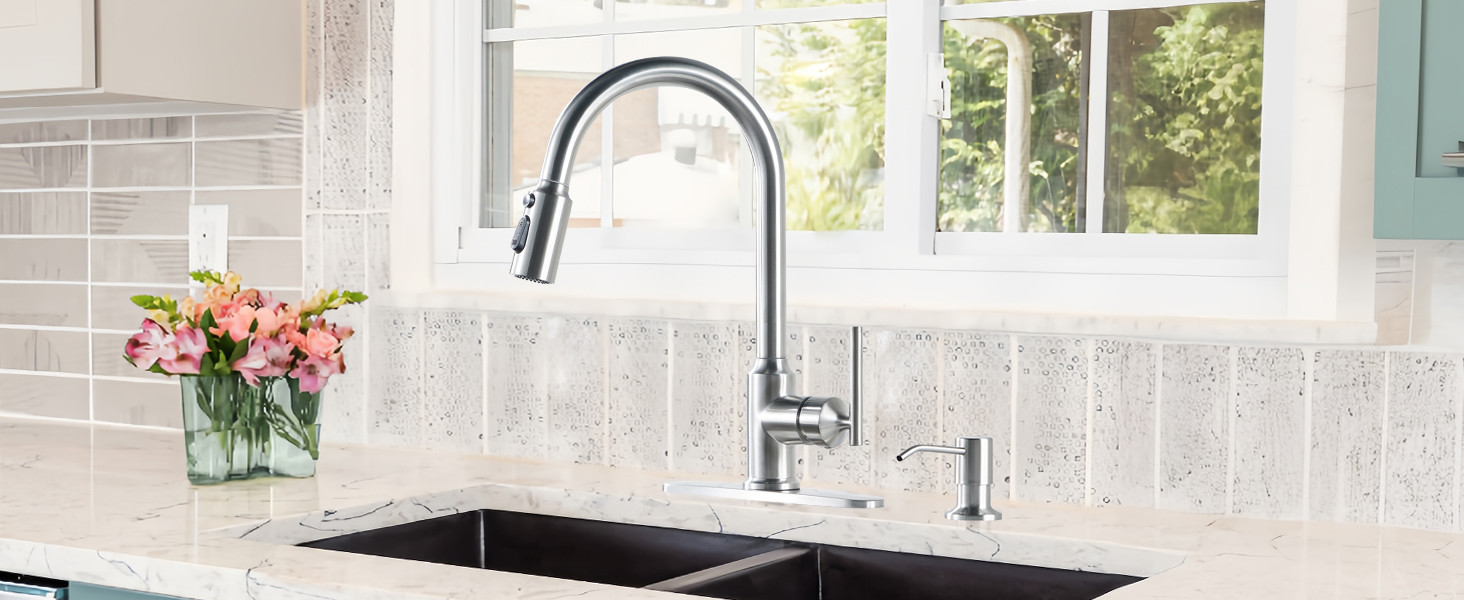Crafting Your Oasis: A Comprehensive Guide to Choosing the Perfect Bathroom Sink with Faucet
Introduction:
In the realm of bathroom design, thebathroom sink with faucet ensemble serves as the focal point, combining functionality and aesthetics to create a harmonious oasis. This comprehensive guide will walk you through the essential considerations for selecting a bathroom sink and faucet, exploring the myriad options available, installation insights, maintenance tips, and the transformative impact these choices can have on your daily self-care sanctuary.
Section 1: The Symbiotic Relationship of Bathroom Sink with Faucet
1.1 Design Synergy:
The bathroom sink and faucet form a symbiotic relationship, working together to define the overall design aesthetic. Whether you envision a sleek and modern look or a classic and timeless ambiance, the sink and faucet ensemble should complement each other, creating a cohesive and visually pleasing composition.
1.2 Functionality Harmony:
Beyond aesthetics, the sink and faucet need to harmonize in functionality. Consider the daily routines and preferences of the users. For a busy family bathroom, a durable and easy-to-clean sink with a versatile faucet may be ideal. In a master suite, a more elegant and spa-like combination could enhance the overall sense of relaxation.
Section 2: Choosing the Right Bathroom Sink with Faucet
2.1 Sink Styles and Configurations:
Bathroom sinks come in various styles and configurations, each catering to different design preferences and spatial considerations. Options range from undermount and drop-in sinks to vessel and wall-mounted sinks. Consider the available space, countertop material, and the desired visual impact when selecting the sink style that aligns with your vision.
2.2 Materials and Finishes:
The material and finish of the sink contribute significantly to both its durability and aesthetic appeal. Common materials include porcelain, ceramic, glass, and stainless steel. Each material offers unique characteristics, from the classic appeal of porcelain to the modern allure of glass. Select a material that not only complements the bathroom’s style but also aligns with your maintenance preferences.
2.3 Size and Depth Considerations:
The size and depth of the sink are crucial factors in determining its functionality. A larger and deeper sink is ideal for those who need ample space for daily tasks, while a smaller, more shallow sink may be suitable for a powder room or a space-conscious bathroom. Consider the needs and habits of the users to strike the right balance.
Section 3: Exploring Faucet OptionsBathroom Sink with Faucet
3.1 Faucet Styles and Mounting Options:
Faucets are available in an array of styles, ranging from traditional to contemporary. Choose a faucet style that complements the overall design theme of your bathroom. Additionally, consider the mounting options, such as deck-mounted, wall-mounted, or freestanding faucets. The choice depends on the sink style and your aesthetic preferences.
3.2 Handle Options and Operation:
Faucet handles are not merely functional components; they are design elements that can enhance the overall look of the bathroom. Choose between single-handle, double-handle, or even touchless faucets based on your preferences and the level of control you desire. The ease of operation contributes to the overall user experience.
3.3 Finish Coordination:
Coordinate the finish of the faucet with the sink and other bathroom fixtures for a cohesive look. Common finishes include chrome, brushed nickel, oil-rubbed bronze, and matte black. The choice of finish adds a layer of personalization and contributes to the visual harmony of the ensemble.
Section 4: Installation Considerations
4.1 Compatibility and Placement:
Ensure that the chosen sink and faucet are compatible in terms of size, style, and installation requirements. Consider the placement of the faucet relative to the sink to ensure optimal functionality. Wall-mounted faucets, for example, may require precise positioning to achieve both aesthetic and practical goals.
4.2 Plumbing Considerations:
Evaluate the existing plumbing in your bathroom and assess whether any modifications are necessary to accommodate the selected sink and faucet ensemble. Some faucets may have specific plumbing requirements, and certain sink styles may necessitate adjustments to plumbing connections. Consult with a professional if needed to ensure a seamless installation process.
4.3 DIY vs. Professional Installation:
While some homeowners may opt for a DIY installation, the complexity of sink and faucet configurations, especially in conjunction with specific plumbing requirements, may require professional assistance. A professional installation ensures that the ensemble is securely fitted, minimizing the risk of leaks and optimizing long-term functionality.
Section 5: Maintenance and Bathroom Sink with Faucet
5.1 Cleaning and Upkeep:
Preserving the pristine appearance of the sink and faucet ensemble requires regular cleaning. Use mild, non-abrasive cleaners for the sink material, and follow manufacturer guidelines for faucet maintenance. Regular cleaning not only ensures a hygienic space but also prolongs the life of these bathroom fixtures.
5.2 Preventing Water Stains and Buildup:
Water stains and mineral buildup can affect both the sink and faucet finish. Wipe down the sink after each use to prevent water spots, especially if you have hard water. Periodically remove the aerator from the faucet and clean it to prevent mineral buildup, ensuring a steady and efficient water flow.
5.3 Addressing Leaks and Drips:
Promptly address any leaks or drips from the faucet to prevent water damage and conserve water. Leaks can be caused by worn-out washers, O-rings, or faulty valves. Regularly inspect the faucet components and replace any worn parts as needed to maintain a reliable and water-efficient ensemble.
Section 6: Customization and Personalization
6.1 Coordinating Accessories:
Enhance the overall aesthetic of the bathroom by coordinating accessories such as towel bars, soap dispensers, and toothbrush holders. Choosing accessories that match or complement the finish of the sink and faucet ensemble creates a cohesive and polished look.
6.2 Vanity and Storage Solutions:
Consider the integration of vanity and storage solutions that enhance the functionality of the bathroom. A well-designed vanity not only complements the sink and faucet ensemble but also provides valuable storage space. Explore options that align with your design vision and practical needs.
Section 7: Environmental Considerations
7.1 Water-Efficient Fixtures:
Opt for water-efficient bathroom sink with faucet that help conserve water without compromising performance. Look for faucets with the WaterSense label, indicating compliance with EPA standards for water efficiency. Water-efficient fixtures contribute to environmental sustainability and can result in cost savings on water bills.
7.2 Eco-Friendly Materials:
Consider the environmental impact of the materials used in the construction of the sink and faucet. Some manufacturers prioritize eco-friendly materials and production processes. Choosing fixtures with sustainable practices aligns with modern design principles and responsible consumer choices.
Section 8: Final Thoughts
In conclusion, the bathroom sink and faucet ensemble is not just a functional necessity but an integral part of creating a personalized oasis. By carefully considering design synergy, functionality, and maintenance aspects, you can craft a bathroom space that transcends utility, becoming a sanctuary for relaxation and self-care.
As you embark on the journey of selecting and installing your ideal Bathroom Sink with Faucet, relish the opportunity to infuse your unique style into every detail. The perfect ensemble is more than the sum of its parts; it’s a reflection of your taste, a facilitator of daily routines, and a transformative element that turns your bathroom into a haven of comfort and elegance.







